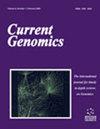新出现的线粒体疾病分子诊断多指标方法以及现有的治疗和预防策略
IF 1.4
4区 生物学
Q4 BIOCHEMISTRY & MOLECULAR BIOLOGY
引用次数: 0
摘要
:线粒体是半独立的细胞器,存在于人体的大多数细胞中,由线粒体 DNA(mtDNA)和编码线粒体蛋白质的核 DNA(nDNA)精确协作控制。它们在许多新陈代谢途径中发挥着重要作用,如合成三磷酸腺苷(ATP)(细胞通过氧化磷酸化(OXPHOS)产生的主要能量底物)、细胞内钙平衡、代谢物生物合成、衰老、细胞周期等。以往的研究表明,这些多功能细胞器的功能障碍可能是由核基因组或线粒体基因组突变引起的,会导致一组临床和基因异质性疾病。这些疾病包括成人和新生儿的神经退行性疾病、代谢性疾病以及心脏和骨骼肌病。大量的表型和缺陷导致线粒体疾病的诊断和治疗面临挑战。在这方面,相关文献提出了多种诊断方案,如高通量线粒体基因组学和全息技术,以及多种治疗方案,如药理学方法、线粒体基因组操作、增加受影响细胞的线粒体含量,以及最近的线粒体疾病传播预防。因此,本文试图回顾线粒体疾病诊断和治疗方案的最新进展和挑战。本文章由计算机程序翻译,如有差异,请以英文原文为准。
Emerging Multi-Omic Approaches to the Molecular Diagnosis of Mitochondrial Disease and Available Strategies for Treatment and Prevention
: Mitochondria are semi-autonomous organelles present in several copies within most cells in the human body that are controlled by the precise collaboration of mitochondrial DNA (mtDNA) and nuclear DNA (nDNA) encoding mitochondrial proteins. They play important roles in numerous metabolic pathways, such as the synthesis of adenosine triphosphate (ATP), the predominant energy substrate of the cell generated through oxidative phosphorylation (OXPHOS), intracellular calcium homeostasis, metabolite biosynthesis, aging, cell cycles, and so forth. Previous studies revealed that dysfunction of these multi-functional organelles, which may arise due to mutations in either the nuclear or mitochondrial genome, leads to a diverse group of clinically and genetically heterogeneous disorders. These diseases include neurodegenerative and metabolic disorders as well as cardiac and skeletal myopathies in both adults and newborns. The plethora of phenotypes and defects displayed leads to challenges in the diagnosis and treatment of mitochondrial diseases. In this regard, the related literature proposed several diagnostic options, such as high throughput mitochondrial genomics and omics technologies, as well as numerous therapeutic options, such as pharmacological approaches, manipulating the mitochondrial genome, increasing the mitochondria content of the affected cells, and recently mitochondrial diseases transmission prevention. Therefore, the present article attempted to review the latest advances and challenges in diagnostic and therapeutic options for mitochondrial diseases.
求助全文
通过发布文献求助,成功后即可免费获取论文全文。
去求助
来源期刊

Current Genomics
生物-生化与分子生物学
CiteScore
5.20
自引率
0.00%
发文量
29
审稿时长
>0 weeks
期刊介绍:
Current Genomics is a peer-reviewed journal that provides essential reading about the latest and most important developments in genome science and related fields of research. Systems biology, systems modeling, machine learning, network inference, bioinformatics, computational biology, epigenetics, single cell genomics, extracellular vesicles, quantitative biology, and synthetic biology for the study of evolution, development, maintenance, aging and that of human health, human diseases, clinical genomics and precision medicine are topics of particular interest. The journal covers plant genomics. The journal will not consider articles dealing with breeding and livestock.
Current Genomics publishes three types of articles including:
i) Research papers from internationally-recognized experts reporting on new and original data generated at the genome scale level. Position papers dealing with new or challenging methodological approaches, whether experimental or mathematical, are greatly welcome in this section.
ii) Authoritative and comprehensive full-length or mini reviews from widely recognized experts, covering the latest developments in genome science and related fields of research such as systems biology, statistics and machine learning, quantitative biology, and precision medicine. Proposals for mini-hot topics (2-3 review papers) and full hot topics (6-8 review papers) guest edited by internationally-recognized experts are welcome in this section. Hot topic proposals should not contain original data and they should contain articles originating from at least 2 different countries.
iii) Opinion papers from internationally recognized experts addressing contemporary questions and issues in the field of genome science and systems biology and basic and clinical research practices.
 求助内容:
求助内容: 应助结果提醒方式:
应助结果提醒方式:


